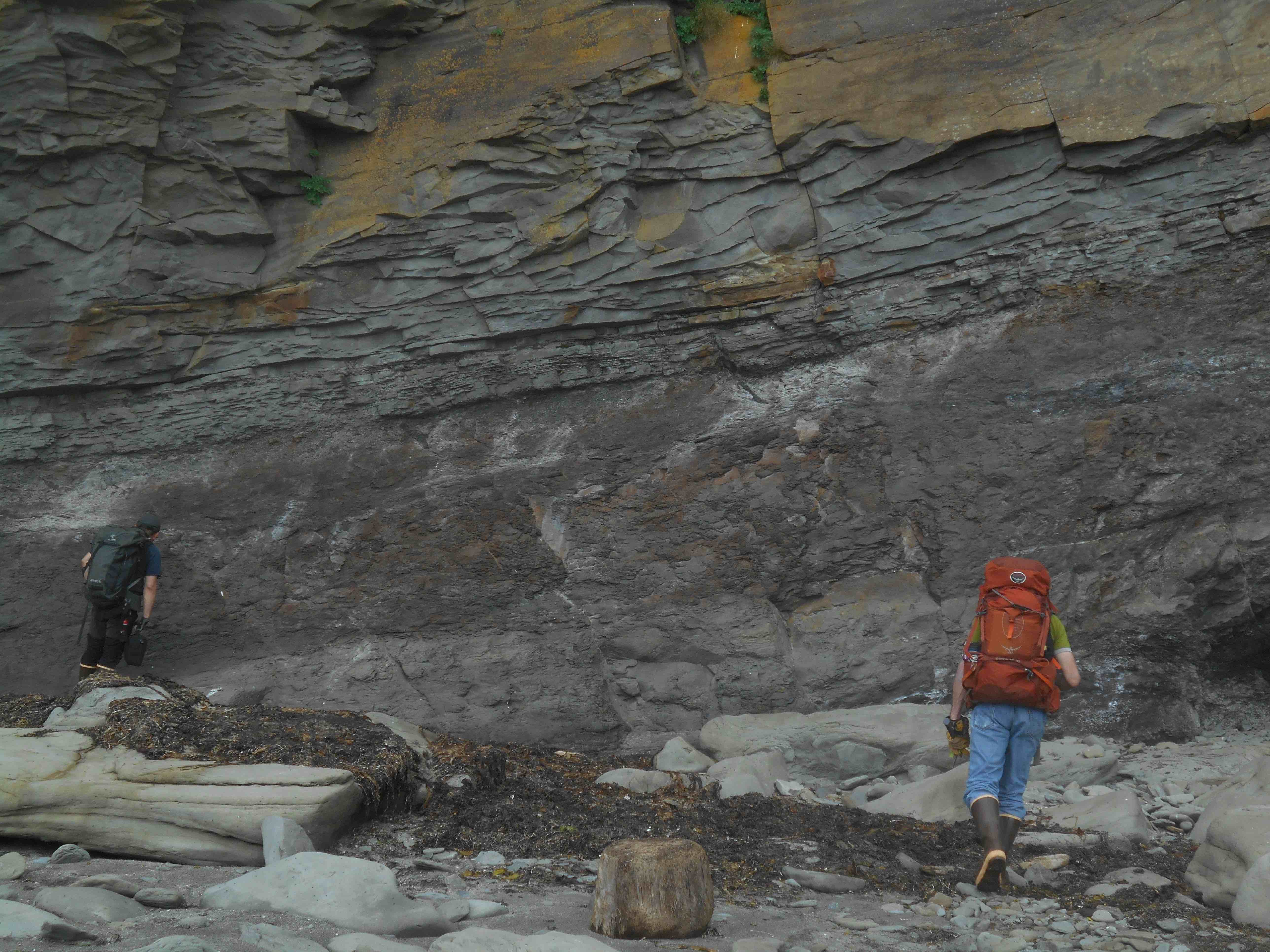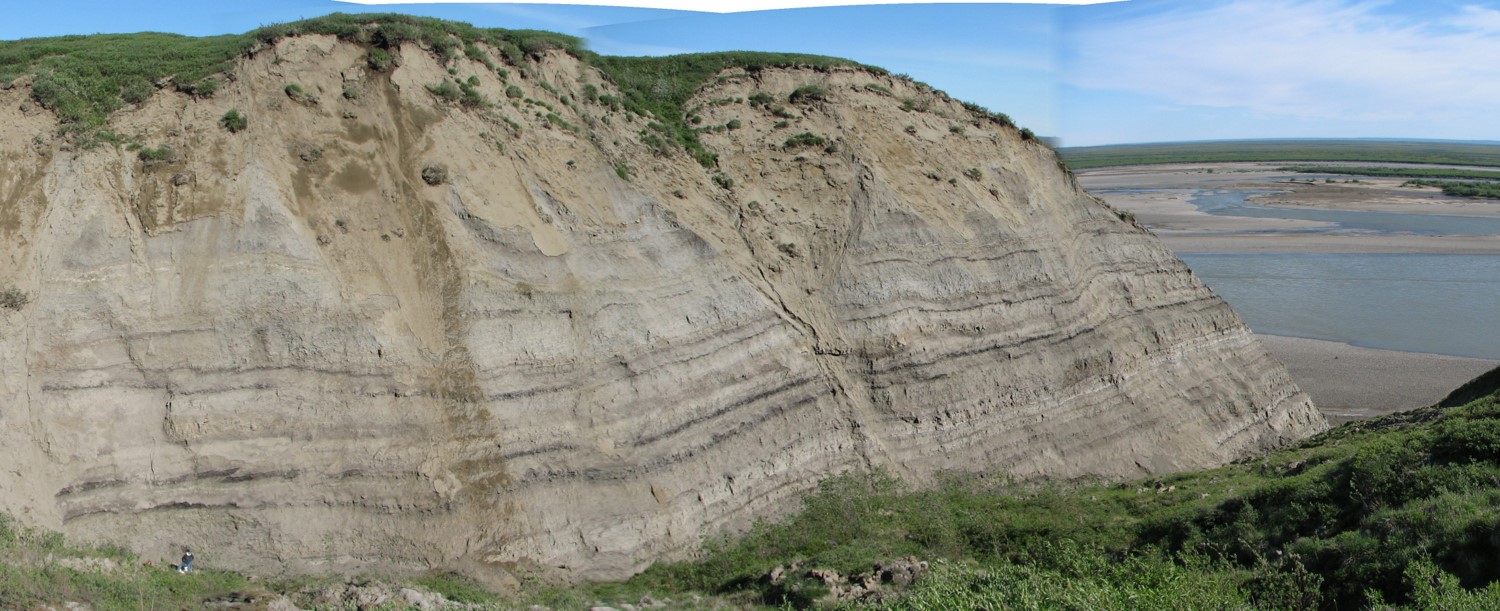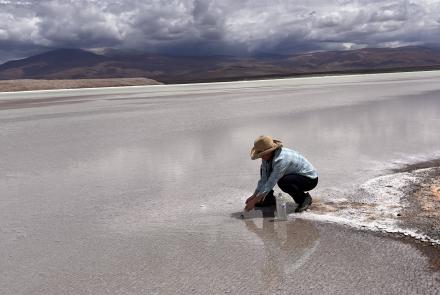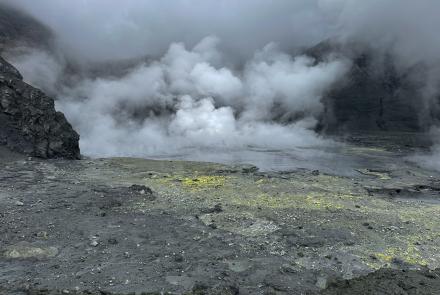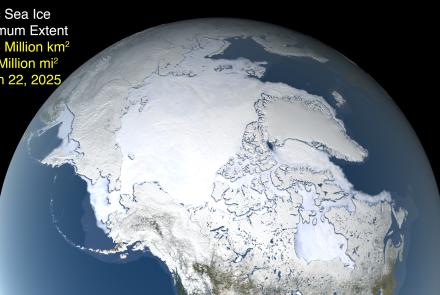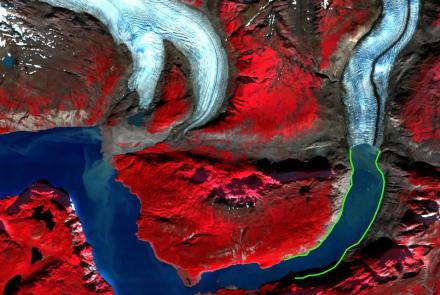


Precipitation helped drive distribution of Alaska dinosaurs
Precipitation more than temperature influenced the distribution of herbivorous dinosaurs in what is now Alaska, according to new research published this month.
The finding, published April 2 in the journal Geosciences, discusses the distribution of hadrosaurids and ceratopsids — the megaherbivores of the Late Cretaceous Period, 100.5 million to 66 million years ago.
The work can help scientists project what the Arctic region might look like in the years ahead if the climate turns similarly warm and wet.
University of Alaska Fairbanks Geophysical Institute geology professor Paul McCarthy, who is also chair of the UAF Department of Geosciences, is co-author of the research paper written by Anthony Fiorillo of Southern Methodist University in Texas. McCarthy has been studying the region’s ancient past for many years.
“The reason we've been looking at Cretaceous environments up here is because Earth was in a greenhouse state at that point in time, and it offers the potential to provide analogs to what we might see, eventually, if global warming continues,” McCarthy said.
“We can't simulate the rates of change, which are likely to have been totally different in the Cretaceous,” he said. “But we can simulate what an ice-free coast would look like and also see how rivers and floodplains would respond to spring snowmelt from the mountains if everything's not frozen. And we can look at the distribution of plants and animals.”
McCarthy, a sedimentologist and a fossil soils specialist, led the analysis of the depositional environments and ancient soils of three rock formations: the fossil-rich Prince Creek Formation along the Colville River in northern Alaska, the Lower Cantwell Formation in the Central Alaska Range and the Chignik Formation on the Alaska Peninsula.
The three formations are close enough to one another on the geologic time scale to allow for a climate comparison, according to the research paper. They all contain Late Cretaceous rocks that were deposited approximately 83 million to 66 million years ago.
Fossilized plants and animals and ancient footprints get most of the public attention, but fossil soil has equally important information to offer through its preserved features, mineral composition and chemical makeup.
“We can look at microscopic features preserved in the fossil soil samples and relate that to modern soil types to get an idea of where they formed,” McCarthy said. “Are we looking at deserts? Are we looking at tropical rainforest or temperate forest? Or grasslands?”
“Fossil soil also preserves pollen grains that can tell us something about the composition of the local vegetation,” he said. “And it contains clay minerals, organic matter and the iron-carbonate mineral siderite, all of which can be used to determine precipitation and temperature using stable isotopic methods.”
From that, paleontologists can learn about the distribution of Alaska’s dinosaurs.
Through analysis at UAF and elsewhere, scientists studying the three Alaska formations found a correlation between the amount of precipitation and the distribution of hadrosaurids and ceratopsids. They also found a lesser correlation between temperature and the distribution of those two groups of dinosaurs.
Hadrosaurids, the duck-billed family of dinosaurs, preferred climates that were wetter and had a narrower annual temperature range. Adults weighed about 3 tons and reached about 30 feet in length. Their percentage dominance over the ceratopsids in the three studied formations increased in the more-favorable climate.
Ceratopsids, a family with beaks and horns, preferred a milder and drier climate but never became dominant in percentage over the hadrosaurids in the three formations. Triceratops is perhaps the best known ceratopsid, at a length of about 25 to 30 feet and weighing 4.5 to 5.5 tons.
The finding for greater influence of precipitation than temperature was based in part on prior research that looked at dinosaur teeth from the Prince Creek Formation, including teeth of hadrosaurids and ceratopsids. That study was led by Celina A. Suarez of the University of Arkansas and included work by McCarthy.
Results from that dental study, authors of the new paper write, suggest that ceratopsids preferred the drier, better-drained regions of the Late Cretaceous Arctic landscape and that hadrosaurids preferred wetter regions of the landscape.
Others involved in the Geosciences paper include Yoshitsugu Kobayashi of the Hokkaido University Museum at Hokkaido University in Japan and Marina B. Suarez of the University of Kansas.
Paul McCarthy, University of Alaska Fairbanks Geophysical Institute, 907-474-6894, pjmccarthy@alaska.edu
Rod Boyce, University of Alaska Fairbanks Geophysical Institute, 907-474-7185, rcboyce@alaska.edu


